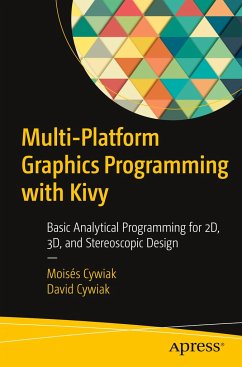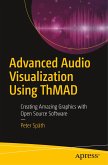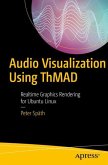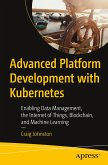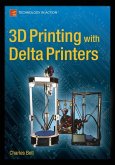Modern science requires computer graphics models to provide realistic visual renderings. Learning the appropriate programming tools for 2D and 3D modeling doesn't have to be so difficult. This book reviews the best programming tools to achieve this and explains how to apply them to mobile platforms like Android.
Multi-Platform Graphics Programming with Kivy provides a straightforward introductory approach for designing 2D, 3D, and stereoscopic applications, using analytical equations from vector algebra. Throughout the book you'll look closely at this approach and develop scenes in Kivy, taking advantage of powerful mathematical functions for arrays by NumPy for Python.
Unbuntu is used to develop the programs, which allows you to easily convert to Android platform. Each chapter contains step-by-step descriptions on each subject and provides complete program listings.
What You'll LearnWorkwith Kivy, a modern, powerful multi-platform graphics systemConvert and run programs on Android devicesProgram, fill faces, and rotate 2D and 3D polygonsApply the concepts of 2D and 3D applicationsDevelop stereoscopic scenesReview a straightforward introduction to 2D, 3D, and stereoscopic graphics applicationsUse simple analytical equations from vector algebraWho This Book Is For
The primary audience is students and researchers in graphics programming with experience in analytical equations.
Multi-Platform Graphics Programming with Kivy provides a straightforward introductory approach for designing 2D, 3D, and stereoscopic applications, using analytical equations from vector algebra. Throughout the book you'll look closely at this approach and develop scenes in Kivy, taking advantage of powerful mathematical functions for arrays by NumPy for Python.
Unbuntu is used to develop the programs, which allows you to easily convert to Android platform. Each chapter contains step-by-step descriptions on each subject and provides complete program listings.
What You'll LearnWorkwith Kivy, a modern, powerful multi-platform graphics systemConvert and run programs on Android devicesProgram, fill faces, and rotate 2D and 3D polygonsApply the concepts of 2D and 3D applicationsDevelop stereoscopic scenesReview a straightforward introduction to 2D, 3D, and stereoscopic graphics applicationsUse simple analytical equations from vector algebraWho This Book Is For
The primary audience is students and researchers in graphics programming with experience in analytical equations.

